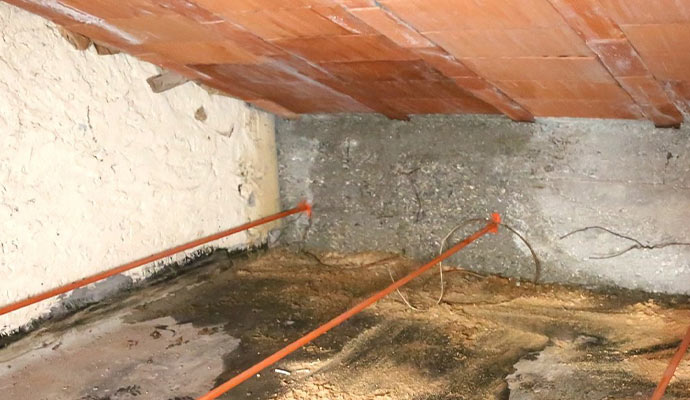The attic is one part of a house that homeowners rarely visit. That’s why water damage can occur in the attic and go unnoticed for weeks or even months until it escalates or causes significant damage to other parts of the house. For many people, by the time they spot slow leaks in their attics, a large part of their joists, ductwork, and insulation is already affected. And in some cases, the ceiling, walls, floors, furnishings, and other belongings get badly soaked.
Dealing with attic water damage can be cost-intensive, depending on the extent of the damage. Many homeowners’ insurance policies cover roof leaks and water damage if it occurs accidentally or suddenly by perils such as high winds or storms. But if roof damage occurs due to usual wear or lack of maintenance, it may not be covered by insurance. In such a case, you’ll need to look for other means to fund the attic water damage. Consider financing your attic repair through a reverse mortgage if you’re up to 62 years old and own most of your home’s equity. You can use a reverse mortgage calculator (https://reverse.mortgage/calculator) to determine how much money you can get. Of course, you may pay for your attic repair from your savings.
Attic Water Damage Prevention
The first defense against attic water damage is prevention and routine roof maintenance. Keep an eye on your roof to ensure it’s in good condition. Trim tree branches growing close to your home to prevent roof damage from fallen branches. Regularly clear debris from the downspouts and gutters of your roof and assess it for signs of defects paying close attention to flashing and shingles. Consider scheduling routine roof inspections with a professional roofing contractor to help check your roof’s integrity, spot signs of corrosion, fix missing shingles, and address other issues that could lead to roof leakage.
Also, check the wood and insulation in your attic for discoloration and mold growth which could indicate water damage. Assess areas around plumbing stacks because leaks are often common in such areas. HVAC systems installed in the attic, such as swamp coolers and air conditioners, should be examined yearly by a technician to prevent breakdowns that could lead to water damage.
Poor ventilation is another typical cause of attic water damage. If your attic is not adequately ventilated, moisture can cause condensation buildup since there’s no means of escape. Adequate attic ventilation is especially crucial in winter because, during such periods, warm air rises to the ceiling and enters the attic. Ensure your attic vent openings are not blocked by insulation or other materials, so they don’t cause humidity problems.
Importantly, ensure that warm air isn’t vented into your attic. In some homes, warm air from the dryer, kitchen, and bathroom vents blows directly into the attic. This could cause moisture accumulation and severe water damage if left unchecked. So, let all your vents direct warm air outside. Consider adding insulation in your attic to help maintain temperature levels and prevent the formation of ice dams during winter. In the cooler winter months, the attic temperature should be about four to ten degrees warmer than outside. If not, ice dams may form on your roof edges, potentially causing water damage. Furthermore, your heating ducts should be in great shape – dry, soft, and thick. Consider replacing them if they feel moist or appear thin and flat.
How to Identify Water Damage in Your Attic
Although water damage is a big problem, it isn’t usually evident at the beginning. Some of the signs to watch out for are:
- Accumulated moisture under and around your attic vents
- Water rings on the walls or ceiling floor
- Dripping sounds coming from inside your attic or walls; this usually occurs when there’s a severe leak
- A musty or mildew smell in the air
- Mold growth in areas under roof valleys; water pooling in corners often cause mold growth
- Rust and corrosion on attic pipes
- Stains around light fixtures beneath the attic – this indicates moisture is leaking from the attic and could pose severe electrical dangers
- Discolorations on attic ceiling materials
How to Tackle Attic Water Damage
If you observe signs of water damage or leak in your attic, remove any stored belongings, stop the leak (if you can), and clean up standing water. Be careful during clean-up because water can weaken the attic floor. Try to identify the source of water damage. You may address necessary repairs yourself, but consider contacting a professional to help with major issues.

